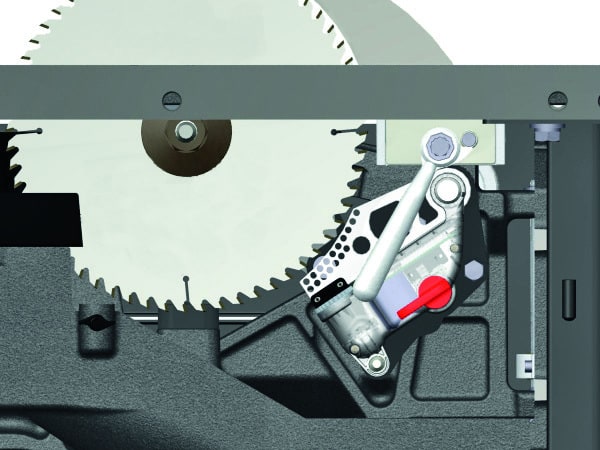Saving fingers
SawStop table saws are drastically reducing the risk of being seriously injured by one on the world’s most infamous tools. Building Connection explains.
Table Saws have long been notorious for causing debilitating injuries, and most contractors will know, or will at least have heard about, someone who’s sustained a serious injury at the helm of one. Building Connection had a chat with Michael Sutton at Carbatec, and he’s no different.
“I knew a very experienced boat builder who was an old hand at using a table saw. He went to work angry one day, wasn’t concentrating on the job at hand, and cut his finger off,” Michael says. The story’s a common one, but one that will hopefully become less common in the near future. We’re at Carbatec to talk about SawStop, a new line of American table saws the company’s stocking.
SawStop table saws are quickly becoming renowned for their outstanding safety features. The company’s demonstration videos have quickly spread across the internet and involve feeding a sausage (in place of a finger) into the blade of the saw and the instant it’s about to get obliterated the blade miraculously drops away, leaving the sausage unscathed. One video even shows the inventor using his finger to activate the safety mechanism.

Michael has seen the sausage demonstration in action and reckons it’s pretty impressive. “We tried it a couple of times with a sausage taped to a piece of wood,” he says. “We fed the first one in pretty slow and the saw stopped so fast we couldn’t see a mark on the sausage at all. Then we forced one in as fast as the saw could cut it and although it still stopped very quickly, there was a bit of a mark. If it was your finger you may have possibly needed a stitch, but you weren’t going to damage the finger too seriously or lose it.”
The saw works by charging the blade with a small electric signal which is constantly monitored by the safety system. When conductive material (like skin) contacts the blade, the signal changes and the safety system is activated. A perforated aluminium brake block then springs into the blade, stopping it dead. The momentum of the blade then drives it below the table, removing all risk of contact, before power to the motor is cut off. The entire sequence is completed in under five milliseconds.
After the safety sequence has been activated, the saw can be reset by replacing the blade and brake cartridge, all of which apparently takes about five minutes.
Safety features aside, SawStop saws are reported to hold their own against their competitors.

“As a saw, it beats everything else we’ve got in the shop,” Michael says. “We’re really blown away by the quality of the engineering of these tools. They are absolutely excellent. The inventor got a team of engineers in and they went right back to first principals for design, making no compromise on quality. Take the industrial model, it weighs 240kg but it’s really easy to move with a smooth foot jack and castors, and the whole thing stays rigid as you move it.
The smoothness and quality of the fence is amazing, the accuracy of the mitre guide is superb and its dust extraction is great. The quality of the whole build is absolutely amazing and the price is comparable to many traditional models.”
SawStop currently has the Industrial, Professional and Contractor models available in Australia, with the company soon to release the more portable Jobsite model. This will offer contractors the ability to easily transport SawStop from job to job on the back of a ute and should be highly anticipated by local builders.
